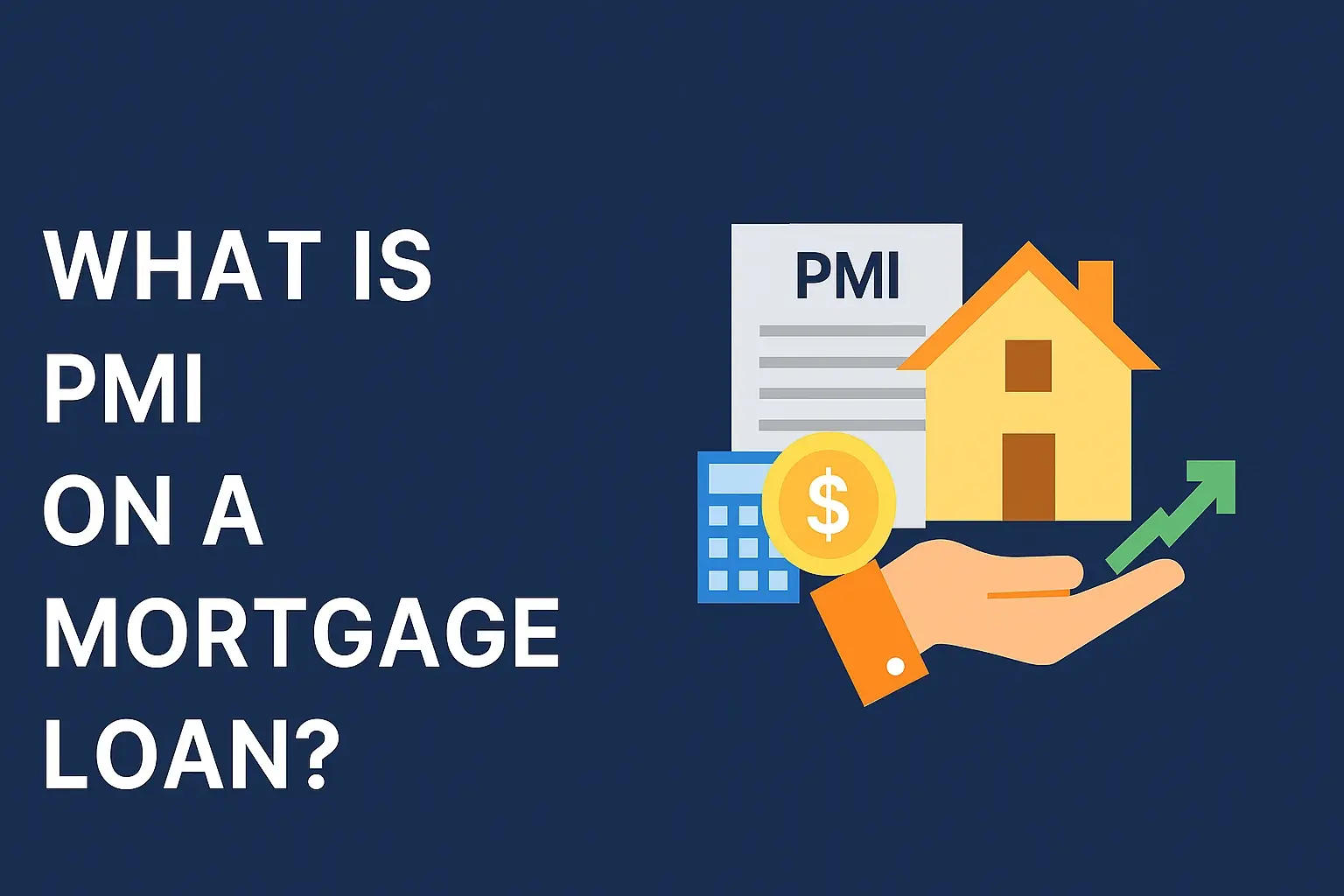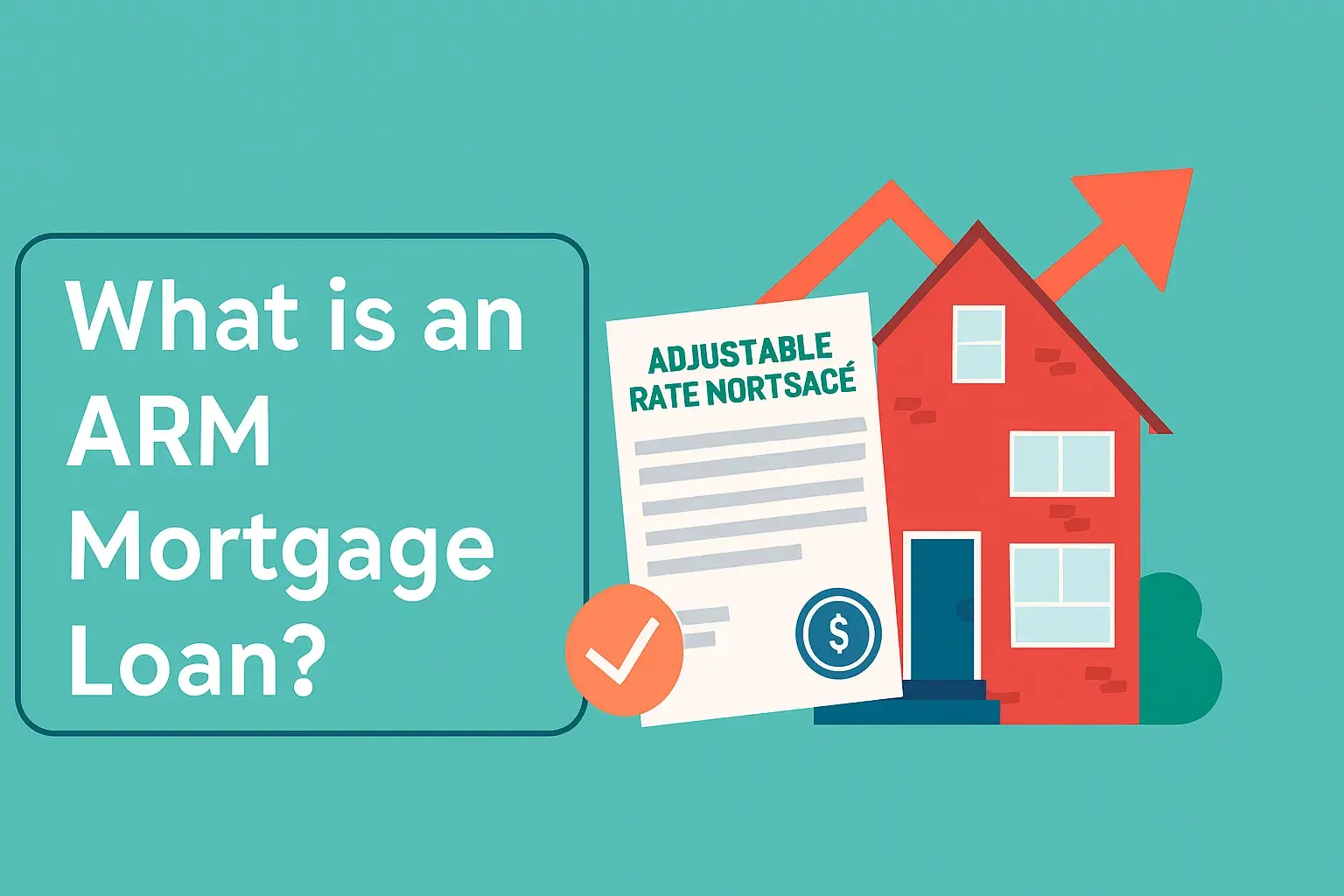-
Posted on: 11 Jan 2025

-
Tired of seeing old collection accounts drag down your credit score? This guide makes deleting collection accounts from your credit report surprisingly straightforward. Learn the proven strategies and understand your rights to achieve a cleaner, more accurate credit history and unlock better financial opportunities in 2025.
Understanding Collection Accounts and Their Impact
Collection accounts are debts that have been charged off by the original creditor because they were not paid. These debts are then sold to third-party debt collectors, who attempt to recover the outstanding balance. When a collection account appears on your credit report, it can significantly damage your credit score, making it harder to qualify for loans, mortgages, credit cards, and even apartments. In 2025, lenders are more discerning than ever, and a single negative mark can be a major hurdle. Understanding what these accounts are and how they affect your financial future is the crucial first step toward effectively managing and removing them.
What Constitutes a Collection Account?
A collection account is essentially a past-due debt that the original creditor has given up on collecting themselves. This could be a credit card balance, a medical bill, a utility payment, or even a personal loan. Once the debt becomes severely delinquent (typically 120-180 days past due), the original creditor will "charge it off." This means they write it off as a loss on their balance sheet. However, the debt doesn't disappear. It's often sold to a debt collection agency for pennies on the dollar. The debt collector then becomes the entity responsible for trying to collect the full amount from you. This is when the account typically appears on your credit report under a new furnisher name – the collection agency.
The Negative Impact on Your Credit Score
The presence of a collection account on your credit report is a significant negative factor. Credit scoring models, like FICO and VantageScore, heavily weigh payment history and the amount of debt you carry. A collection account signifies a severe delinquency and a failure to meet financial obligations. This can lead to a substantial drop in your credit score, often by dozens or even hundreds of points, depending on your existing credit profile. In 2025, with credit scores becoming increasingly important for everything from insurance rates to employment screening, a low score due to collections can have far-reaching consequences.
Specific Credit Score Effects
The exact impact varies, but here's what you can generally expect:
- Payment History: Collection accounts are a direct indicator of poor payment history, which is the most critical factor in credit scoring.
- Credit Utilization: While not directly a utilization issue, the outstanding balance on a collection account can sometimes be factored into certain scoring models.
- Length of Credit History: The age of the debt can also play a role. Older collections might have less impact over time, but they remain a negative mark until removed.
- Number of Accounts: Having multiple collection accounts drastically amplifies the negative impact.
Why Deleting Collection Accounts Matters
The primary motivation for deleting collection accounts is to improve your credit score. A higher credit score can unlock a multitude of financial benefits:
- Lower Interest Rates: This means saving thousands of dollars on mortgages, auto loans, and other forms of credit.
- Easier Loan Approvals: Lenders are more likely to approve your applications for credit.
- Better Credit Card Offers: Access to premium rewards cards and higher credit limits.
- Improved Rental Prospects: Landlords often check credit reports, and collections can lead to rejections.
- Potential Employment Benefits: Some employers, especially in financial sectors, review credit reports.
In 2025, financial health is paramount, and a clean credit report is a cornerstone of that health. Taking proactive steps to remove inaccurate or outdated collection accounts is an investment in your financial future.
Your Legal Rights: The Fair Credit Reporting Act (FCRA)
The Fair Credit Reporting Act (FCRA) is your most powerful ally when dealing with credit reporting agencies and debt collectors. This federal law, enacted to ensure the accuracy, fairness, and privacy of consumer credit information, grants you specific rights. Understanding these rights is fundamental to successfully deleting collection accounts from your credit report. The FCRA empowers you to dispute inaccurate information and holds credit bureaus and furnishers accountable for maintaining correct records.
Key Provisions of the FCRA Relevant to Collections
The FCRA outlines several critical provisions that directly apply to collection accounts:
- Accuracy of Information: Credit bureaus and furnishers of information (like debt collectors) must ensure the information they report is accurate.
- Dispute Resolution: Consumers have the right to dispute any information on their credit report that they believe is inaccurate or incomplete.
- Investigation Timeline: When you dispute information, the credit bureau must investigate the dispute, usually within 30 days (sometimes extended to 45 days if you provide additional information during the dispute period). They must also contact the furnisher of the information to verify its accuracy.
- Furnisher Responsibilities: The debt collector or original creditor must investigate disputes and correct or remove any inaccurate information.
- Reporting of Obsolete Information: Most negative information, including collection accounts, can only remain on your credit report for a maximum of seven years from the date of the original delinquency.
The Seven-Year Rule Explained
The seven-year reporting limit is a cornerstone of the FCRA. For most negative items, including collection accounts, the clock starts ticking from the date of the first delinquency that led to the account becoming past due. This means that even if a debt is sold to a new collector years later, the original delinquency date dictates how long it can legally appear on your credit report. By 2025, it's crucial to know that older collection accounts may be nearing or have passed this reporting limit.
Your Right to Dispute Inaccurate Information
This is arguably the most potent tool you have. If a collection account on your report contains errors – such as the wrong balance, incorrect dates, or it belongs to someone else – you have the right to dispute it. The FCRA mandates that credit bureaus investigate these disputes. If the furnisher cannot verify the accuracy of the information, it must be removed from your credit report.
Your Right to Request Validation of Debt
When a debt collector first contacts you about a debt, or shortly after the account appears on your credit report, you have the right to request "validation of the debt." This means the collector must provide proof that they own the debt and that you are indeed liable for it. This is a critical step, especially for older or potentially inaccurate collection accounts. We will delve deeper into this process in the next section.
The Role of the Consumer Financial Protection Bureau (CFPB)
The Consumer Financial Protection Bureau (CFPB) is a U.S. government agency that protects consumers in the financial sector. They oversee federal consumer financial laws, including the FCRA. If you encounter issues with credit bureaus or debt collectors that you cannot resolve directly, you can file a complaint with the CFPB. Their involvement can often prompt a quicker and more effective resolution. Staying informed about your rights under the FCRA is the bedrock of successfully navigating the process of deleting collection accounts from your credit report.
The Power of Debt Validation: Your First Step
Debt validation is a powerful consumer right granted by the FCRA. It's your initial and often most effective strategy for challenging collection accounts. When a debt collector contacts you about a debt, or when a collection account appears on your credit report, you have the right to request that the collector validate the debt. This process forces the collector to prove they have the legal right to collect the debt from you and that the amount is accurate. For many, this is the key to getting questionable collection accounts removed.
What is Debt Validation?
Debt validation is a formal request you make to a debt collector. You are not admitting you owe the debt; rather, you are asking them to provide evidence that the debt is valid, that they own it, and that you are the person responsible for paying it. Think of it as the collector having to show their homework before you agree to anything.
When to Request Debt Validation
The ideal time to request debt validation is:
- Immediately upon first contact: If a debt collector calls or sends you a letter for the first time about a debt, send your validation request within 30 days of their initial communication. This is crucial because it invokes your FCRA rights and can prevent the debt from being reported or re-aged.
- When a new collection account appears on your credit report: If you discover a collection account on your credit report that you don't recognize or believe is inaccurate, you can dispute it with the credit bureaus and simultaneously request validation from the debt collector.
How to Request Debt Validation
It is critical to make your debt validation request in writing and send it via certified mail with a return receipt requested. This creates a paper trail, proving that you made the request and that the collector received it. Keep copies of everything for your records.
Here’s a sample of what your letter should include:
Dear [Debt Collector Name],
This letter is a formal request for validation of the alleged debt you claim I owe. Please provide the following information:
1. Proof that you are licensed to collect debts in my state. 2. A copy of the original signed contract or agreement for this debt. 3. The original account number and the account number assigned by your agency. 4. A detailed payment history, including dates and amounts of all payments made and received. 5. Verification that the statute of limitations for this debt has not expired. 6. Proof that you are the legal owner of this debt.
Until you provide this validation, please cease all collection activities and do not report this account to any credit reporting agencies. If you have already reported this account, please provide proof of its accuracy.
Sincerely,
[Your Full Name]
[Your Address]
[Date]What Happens After You Send the Request?
Once the debt collector receives your validation request, they are legally obligated to stop collection efforts until they can provide the requested validation. If they cannot validate the debt according to the FCRA's requirements, they must cease collection efforts and, crucially, remove the collection account from your credit report. If they have already reported it to the credit bureaus, they must also have it removed from your credit report.
What If the Collector Provides Validation?
If the collector provides sufficient proof that the debt is valid, that they own it, and that you are liable for it, then the debt is considered validated. At this point, you have a few options:
- Dispute Inaccuracies: Even if validated, you can still dispute any inaccuracies in the provided information.
- Negotiate a Settlement: You can attempt to negotiate a settlement for less than the full amount owed.
- Pay the Debt: You can pay the full amount. However, be aware that paying a collection account, even if valid, may not significantly improve your score, and in some cases, it can even reset the seven-year reporting period if not handled correctly.
Debt validation is a powerful first step because it requires the collector to do the legwork and prove their case. Many collection accounts, especially older ones or those sold multiple times, lack proper documentation, making them difficult to validate. This often leads to their removal from your credit report, which is exactly what we aim for when deleting collection accounts from your credit report made easy.
Disputing Inaccurate Collection Accounts
Even if a debt collector can validate a debt, there's still a strong chance the collection account on your credit report contains errors. The FCRA mandates that credit bureaus investigate disputes, and if the furnisher cannot prove the accuracy of the information, it must be removed. This section focuses on the process of disputing these inaccuracies, a critical step in making the deletion of collection accounts from your credit report made easy.
Common Errors Found on Collection Accounts
Collection accounts are prone to errors due to the nature of debt transfer and the volume of accounts handled by collection agencies. Some common mistakes include:
- Incorrect Dates: The date of first delinquency or the date of last payment can be wrong, potentially extending the reporting period beyond the legal limit.
- Incorrect Balances: The amount owed may be inflated due to added fees, interest, or simply miscalculation.
- Wrong Consumer Information: The account might be listed under the wrong name, address, or Social Security number, indicating it belongs to someone else.
- Duplicate Accounts: The same debt may appear more than once, sometimes from different collectors.
- Accounts Already Paid or Settled: The report may show an outstanding balance on a debt that has already been paid or settled.
- Accounts Not Belonging to You: This is a significant error where the collection agency has erroneously linked a debt to your credit profile.
- Statute of Limitations Expired: While not strictly an "error" on the report itself, reporting a debt that is past its statute of limitations can be challenged.
The Step-by-Step Dispute Process
Disputing inaccurate information with credit bureaus is a structured process. Follow these steps carefully:
Step 1: Obtain Your Credit Reports
Before you can dispute anything, you need to know what's on your credit reports. You are entitled to a free credit report from each of the three major credit bureaus (Equifax, Experian, and TransUnion) once every 12 months via AnnualCreditReport.com. In 2025, it's more important than ever to check these regularly.
Step 2: Identify the Inaccuracies
Review each of your credit reports meticulously. Highlight or make notes of any collection accounts that you believe are inaccurate or that you wish to dispute. Compare the information across all three reports, as errors can vary.
Step 3: Write Your Dispute Letter
You can dispute online, by phone, or by mail. However, disputing by mail using certified mail with a return receipt is generally recommended because it provides a clear record of your communication. Your letter should be clear, concise, and factual. Do NOT include emotional language or lengthy explanations.
Your dispute letter should:
- Clearly state that you are disputing information on your credit report.
- Identify the specific collection account you are disputing (include the name of the collection agency, account number, and approximate balance).
- Clearly explain the reason for your dispute (e.g., "This account balance is incorrect," "This account belongs to someone else," "This debt has already been paid," "This account is past the seven-year reporting limit").
- Request that the inaccurate information be removed from your credit report.
- Include copies (NEVER originals) of any supporting documentation you have (e.g., proof of payment, previous communication with the collector, identity verification if it's a case of mistaken identity).
- Send the letter via certified mail with return receipt requested to each credit bureau reporting the inaccurate information.
Important Note: If you previously sent a debt validation letter to the collector, you can mention this in your dispute letter to the credit bureau and include a copy of the validation request and any response (or lack thereof) from the collector.
Step 4: The Credit Bureau's Investigation
Once the credit bureau receives your dispute, they have approximately 30 days to investigate. They will contact the debt collector (the "furnisher") to verify the information. The furnisher must respond to the credit bureau's inquiry and provide evidence supporting the accuracy of the account. If the furnisher cannot provide sufficient proof, the credit bureau must remove the inaccurate information from your report.
Step 5: Review the Results
After the investigation, the credit bureau will send you an updated credit report and a letter detailing the results of their investigation. If the disputed information has been removed, congratulations! If the information remains, and you believe it's still inaccurate, you can:
- Send a follow-up letter: If new evidence surfaces, or if you believe the investigation was incomplete, you can send another dispute letter.
- Escalate: Consider filing a complaint with the CFPB or seeking legal counsel.
Disputing with the Debt Collector Directly
In addition to disputing with the credit bureaus, you can also dispute directly with the debt collector. This is often done after sending a debt validation letter. If the collector cannot validate the debt, they should remove it. If they refuse or cannot, you can send them a formal dispute letter stating the reasons why you believe the debt is invalid or inaccurate and demanding its removal from your credit report.
Comparison: Disputing vs. Validation
Feature Debt Validation Disputing Inaccuracies Primary Target Debt Collector Credit Bureaus (and indirectly, the collector) Goal Force collector to prove they own and can collect the debt. Force bureaus to remove incorrect information if not verified. Timing Best within 30 days of first contact. Anytime an inaccuracy is found. Legal Basis FCRA (Right to request validation) FCRA (Right to dispute inaccurate information) Outcome if Successful Collector must cease collection and remove from reports. Inaccurate item removed from credit reports. By systematically disputing any inaccuracies, you significantly increase your chances of deleting collection accounts from your credit report, making the process of improving your credit score more manageable and effective in 2025.
Negotiating Settlements for Deletion
Sometimes, a collection account is valid, and the debt collector can prove it. In such cases, your goal shifts from outright deletion due to inaccuracy to negotiating a settlement for deletion. This means agreeing to pay a portion of the debt in exchange for the collector agreeing to remove the collection account from your credit report entirely. This is a powerful strategy, but it requires careful negotiation and a clear understanding of the terms.
When to Consider Negotiating a Settlement
Negotiating a settlement is a good option when:
- The debt is valid: The collector has provided sufficient validation, and you acknowledge the debt is legitimate.
- The debt is within the statute of limitations: You are legally obligated to pay it.
- You cannot afford to pay the full amount: A settlement allows you to resolve the debt for less.
- You want the account removed from your credit report: This is the key objective. Simply paying the debt without an agreement for deletion might not improve your score significantly and could even reset the reporting period.
The Art of Negotiation
Negotiating with debt collectors can be intimidating, but remember they are often looking to recover some money rather than none. Here’s how to approach it:
- Be Polite but Firm: Maintain a professional and respectful tone.
- Don't Admit Fault Immediately: You can acknowledge the debt exists without saying "I owe you the full amount."
- Start Low: If the debt is old and you have strong leverage (e.g., it's close to the statute of limitations or has documentation issues), you might start an offer as low as 20-30% of the total amount owed. For newer, more easily validated debts, starting around 50% is more common.
- Justify Your Offer: Explain why your offer is reasonable. For example, "This debt is quite old, and I have other financial obligations."
- Be Prepared to Walk Away: If the collector isn't budging or the offer isn't good, be willing to end the conversation. They might call back with a better offer.
- Focus on "Pay for Delete": This is the crucial phrase. You want the collector to agree, in writing, to delete the collection account from all credit bureaus in exchange for your payment.
Securing a "Pay for Delete" Agreement
This is the most critical part of the negotiation. You MUST get the agreement in writing *before* you send any payment. A verbal agreement is not enough.
Here’s how to handle it:
- Negotiate the amount first.
- Once you agree on a settlement amount, state: "I am willing to pay $[Agreed Amount] to settle this debt, provided that you agree to delete this collection account entirely from my credit report with Equifax, Experian, and TransUnion. I require this agreement in writing before I make any payment."
- If the collector agrees, ask them to send you a written confirmation letter. This letter should clearly state the settlement amount, that the payment will be considered payment in full, and that they will remove the collection account from all three credit bureaus.
- Once you receive the written agreement, send your payment. It's best to send a check or money order, as this provides a record of payment.
- After payment, wait 30-45 days. Then, check your credit reports to ensure the collection account has been removed.
- If it hasn't been removed, you have your written agreement and can use it to dispute the account with the credit bureaus or take further action.
Settlement vs. Paying in Full
Aspect Settlement for Deletion Paying in Full (without deletion agreement) Amount Paid Less than full amount. Full amount. Credit Report Impact Collection account removed (ideal outcome). Account updated to "paid collection," which is still negative and may not improve score significantly. Could reset reporting period. Negotiation Required Yes, to agree on amount and deletion. Generally no negotiation needed on amount. Risk Collector may not delete if agreement isn't in writing. No financial risk of non-deletion, but score impact may be minimal. Beware of "Pay for Delete" Scams
Not all debt collectors will agree to "pay for delete." Some may claim it's against their policy. If a collector refuses outright, you might have to choose between paying it off (which will still show as "paid collection") or pursuing other dispute methods if you believe there are inaccuracies. Be wary of collectors who promise deletion without written confirmation or who ask for payment upfront before providing the written agreement.
When Paying Might Not Help Your Score
It's a common misconception that paying off a collection account automatically boosts your score. While it removes the "unpaid" status, the fact that it was a collection account remains. In 2025, many scoring models (like newer FICO versions) are less impacted by paid collections than unpaid ones, but the negative history still lingers. This is why a "pay for delete" agreement is the superior strategy for deleting collection accounts from your credit report made easy.
Understanding the Statute of Limitations
The Statute of Limitations (SOL) is a law that sets the maximum time after an event within which legal proceedings may be initiated. For debts, it defines the period during which a creditor or debt collector can sue you to collect a debt. Understanding the SOL is crucial because if a debt is past its statute of limitations, a collector can no longer legally sue you for it. While this doesn't automatically remove it from your credit report, it significantly weakens the collector's position and can be a powerful negotiation tool.
How the Statute of Limitations Works for Debts
Each state has its own SOL for different types of debt (e.g., written contracts, oral contracts, credit cards). These periods typically range from 3 to 10 years. The SOL begins to run from the date of the last payment or the date of the original delinquency, whichever is earlier.
Key points to remember:
- State-Specific: The SOL varies by state. You need to know the SOL for the state where the original contract was signed or where you resided at the time of the delinquency.
- Type of Debt: Different types of debt have different SOLs.
- "Re-aging" the Debt: Making a payment or acknowledging the debt in writing can sometimes reset the SOL clock in some states. This is why it's critical to be careful about what you say or do regarding old debts.
Why the SOL Matters for Collection Accounts
Even though a collection account on your credit report is not the same as a lawsuit, the SOL is highly relevant:
- No Legal Recourse: If a debt is past its SOL, the collector cannot win a lawsuit against you to collect it.
- Negotiation Leverage: You can use the fact that a debt is past its SOL as a strong bargaining chip. A collector might be willing to settle for a much lower amount or even agree to delete the account if they know they have no legal standing to sue you.
- Reporting Limitations: While the FCRA has a seven-year reporting limit for most negative items, the SOL is a separate legal concept. A debt can be too old to sue for but still within the seven-year reporting period. Conversely, a debt might be within its SOL but too old to be legally reported on your credit file.
How to Determine the Statute of Limitations
- Identify the Original Creditor and Debt Type: Was it a credit card, medical bill, personal loan?
- Determine the Date of Last Activity: This is usually the date of your last payment or the date you first became delinquent.
- Research Your State's SOL Laws: You can find this information on your state's government website or by consulting legal resources. For example, if you live in California and the debt was a credit card, the SOL for written contracts is typically 4 years.
Using the SOL to Your Advantage
If you determine a collection account on your credit report is past its statute of limitations:
- Do NOT make a payment or acknowledge the debt in writing unless you have a written "pay for delete" agreement first. A single payment could revive the debt and restart the SOL clock.
- Use it in negotiations: When negotiating with the debt collector, you can state, "I understand this debt is past its statute of limitations in my state, meaning you have no legal recourse to sue me for it. Therefore, I am offering $[Settlement Amount] to resolve this matter."
- Dispute if reported past SOL: While the SOL doesn't directly govern credit reporting, some argue that reporting a debt for which legal action is time-barred is misleading or unfair. You can attempt to dispute it with the credit bureaus on these grounds, though success may vary. The primary power of the SOL lies in negotiation.
SOL vs. Credit Reporting Time Limits
It's crucial to distinguish between the SOL and the FCRA's seven-year reporting limit. They are different:
Feature Statute of Limitations (SOL) FCRA Reporting Limit Purpose Time limit for legal action (lawsuits). Time limit for negative information on credit reports. Duration Varies by state and debt type (3-10 years typically). 7 years for most negative items (10 years for bankruptcies). Trigger Date of last payment/delinquency. Date of first delinquency. Impact if Expired Collector cannot sue you. Negative item must be removed from credit report. Understanding the SOL empowers you with knowledge. It allows you to identify debts that are legally uncollectible through the courts and use that leverage to negotiate favorable terms, further simplifying the process of deleting collection accounts from your credit report made easy.
When to Consider Professional Help
While many people can successfully remove collection accounts from their credit reports by following the steps outlined above, there are situations where seeking professional assistance is beneficial. Credit repair companies or attorneys specializing in consumer law can offer expertise, save you time, and potentially achieve better results, especially in complex cases.
Who Can Help You?
- Credit Repair Organizations: These companies offer services to help consumers improve their credit reports. They often employ experts familiar with the FCRA and the dispute process.
- Consumer Protection Attorneys: If you believe a debt collector or credit bureau has violated your rights under the FCRA or other consumer protection laws, an attorney can provide legal advice and representation.
Signs You Might Need Professional Help
Consider seeking professional assistance if:
- You're Overwhelmed: The process of disputing and negotiating feels too complex or time-consuming.
- Multiple Inaccuracies: You have numerous errors across your credit reports from different collectors.
- Aggressive or Illegal Collection Tactics: You are facing harassment, threats, or violations of the Fair Debt Collection Practices Act (FDCPA).
- Complex Cases: You're dealing with identity theft, deceased relative's debts, or debts with unclear ownership.
- Lack of Progress: You've tried disputing on your own without success.
- Settlement Negotiations Stall: You're struggling to reach a favorable "pay for delete" agreement.
Choosing a Reputable Credit Repair Company
If you decide to use a credit repair company, do your due diligence:
- Check Reviews and Reputation: Look for independent reviews and testimonials.
- Understand Their Fees: Be wary of companies that charge high upfront fees. Reputable companies often charge fees after services are rendered or have a transparent monthly fee structure.
- Ask About Their Methods: Ensure they use legitimate dispute and negotiation tactics, not questionable or illegal methods.
- Read the Contract Carefully: Understand the services they provide, the fees, and the cancellation policy.
- Never Sign a Contract that Promises Specific Results: No legitimate company can guarantee the removal of accurate information.
- Be Aware of the Credit Repair Organizations Act (CROA): This federal law protects consumers by setting rules for credit repair companies.
When an Attorney Might Be Better
An attorney is often the best choice if:
- Legal Violations are Suspected: The debt collector has engaged in illegal practices (e.g., harassment, false threats of legal action, reporting time-barred debt).
- You're Considering a Lawsuit: If you have a strong case for damages due to violations of consumer protection laws.
- Complex Legal Issues: Dealing with bankruptcy, judgments, or other intricate legal matters related to debt.
Attorneys can often negotiate more effectively and have the power to file lawsuits if necessary, which can be a powerful motivator for debt collectors and credit bureaus to comply.
Cost vs. Benefit Analysis
Professional services come at a cost. Weigh the fees against the potential benefits:
- Time Savings: Professionals handle the legwork, freeing up your time.
- Expertise: They understand the nuances of consumer law and credit reporting.
- Potential for Better Results: Their experience might lead to faster or more comprehensive removal of negative items.
For many, the peace of mind and potential for a significantly improved credit score make the investment worthwhile. However, always remember that you can achieve success on your own by diligently applying the strategies discussed in this guide. Deleting collection accounts from your credit report made easy is achievable with the right knowledge and persistence.
Preventing Future Collection Accounts
The best way to deal with collection accounts is to avoid them altogether. By adopting sound financial habits and staying organized, you can prevent future negative marks on your credit report and maintain a healthy financial standing. As we look ahead to 2025 and beyond, proactive financial management is key.
Budgeting and Financial Planning
A well-structured budget is the foundation of financial stability. It helps you track your income and expenses, identify areas where you can save, and ensure you have enough funds to cover your obligations.
- Track Your Spending: Use budgeting apps, spreadsheets, or a simple notebook to monitor where your money goes.
- Create a Realistic Budget: Allocate funds for essential expenses, savings, debt repayment, and discretionary spending.
- Build an Emergency Fund: Aim to save 3-6 months of living expenses. This fund can cover unexpected costs like medical emergencies or job loss, preventing you from falling behind on bills.
Managing Debt Effectively
High levels of debt can make it difficult to meet payment obligations. Implement strategies to manage your debt responsibly.
- Prioritize High-Interest Debt: Use methods like the debt snowball or debt avalanche to pay down debts efficiently.
- Avoid Taking on Unnecessary Debt: Think carefully before taking out new loans or credit cards.
- Communicate with Creditors: If you anticipate difficulty making a payment, contact your creditor *before* the due date. They may be willing to work out a payment plan or offer temporary relief.
Staying Organized with Bill Payments
Missed payments are the primary cause of collection accounts. Implement systems to ensure you never miss a due date.
- Set Up Auto-Pay: For recurring bills, automatic payments from your bank account can ensure timely payments. Ensure you have sufficient funds in your account to cover these.
- Use Calendar Reminders: Set up alerts on your phone or computer a few days before bills are due.
- Keep a Bill Payment Calendar: A physical or digital calendar can help you visualize upcoming due dates.
- Consolidate Due Dates: If possible, try to align your bill due dates to a specific period each month (e.g., the first week after payday).
Monitoring Your Credit Regularly
Regularly checking your credit reports allows you to catch potential issues early.
- Annual Credit Reports: Obtain your free reports from AnnualCreditReport.com at least once a year.
- Credit Monitoring Services: Consider using a credit monitoring service that alerts you to changes on your credit reports, including new collection accounts.
Understanding Your Financial Obligations
Before agreeing to any new debt or service, understand the terms and conditions fully.
- Read the Fine Print: Pay attention to interest rates, fees, repayment terms, and late payment penalties.
- Assess Affordability: Ensure you can comfortably afford the monthly payments for any new debt or service.
By implementing these preventative measures, you can significantly reduce the likelihood of encountering collection accounts and maintain a strong credit profile. This proactive approach is the ultimate strategy for keeping your credit report clean and ensuring financial well-being in 2025 and beyond.
Conclusion
Deleting collection accounts from your credit report is an achievable goal that can dramatically improve your financial standing. By understanding your rights under the FCRA, leveraging the power of debt validation, and meticulously disputing inaccuracies, you can remove incorrect or unverified collections. For valid debts, negotiating a "pay for delete" settlement offers a path to resolution and removal, especially when armed with knowledge of the statute of limitations. While professional help is an option for complex situations, diligence and persistence are often all that's needed. Remember, preventing future collection accounts through smart budgeting, timely payments, and regular credit monitoring is the most effective long-term strategy. Take control of your credit report today and unlock a brighter financial future.










